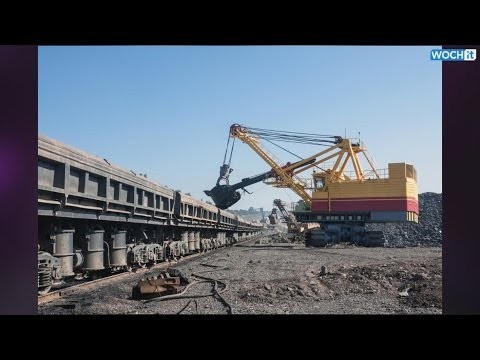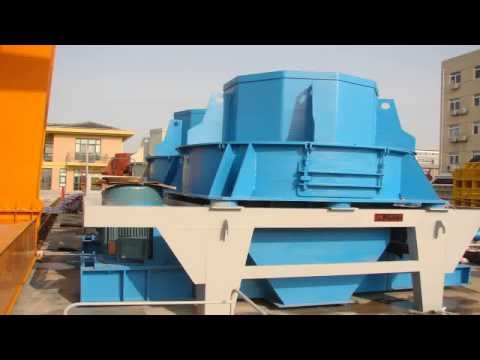1 Iron Ore Stock To Buy To Play A Rebound 1 To Avoid Vale S A (NYSE VALE)
Post on: 25 Июнь, 2015 No Comment

The iron ore market is showing signs of improvements, as prices increased to a three-month high and Brazil reported the third highest shipments ever in a month. However, as we will discuss later, the market still remains balanced and investors are looking at what actions the new leadership will take in China to boost steel demand.
We have a bullish stance on Vale S.A. (NYSE:VALE ). We think that this low cost producer with its long life reserves and strong balance sheet is well positioned to benefit from a rebound in iron ore prices. Vale is also offering a dividend yield of 3.4 per cent. However, the CLF Natural Resources (NYSE:CLF ) has operational concerns and it might cut dividend if prices do not rebound. Other than a dividend cut, raising capital and selling core assets are the other two options for CLF. We would advise investors to avoid this iron ore stock for the time being.
$120 — A three month high:
The benchmark iron ore price rose above $120 a ton, a three month high. as Chinese steel producers are refilling raw material inventories. However, the pace of increase in prices still does not indicate a stocking rush on the part of mills. Iron ore is a key ingredient in steel production. It takes about 1.5 tons of iron ore to make one ton of steel.
Chinese Leadership Change:
After a change in Chinese leadership, the world’s largest steel user, the market is expecting favorable measures to be introduced to boost growth.
An iron ore trader in Shanghai said We’re seeing a balanced market. Buyers are in no rush to buy but they will take cargoes if the prices are not too high.
On the other side, it’s difficult for miners to push up prices in a big way given how fragile demand is at the moment.
Keeping in view the present price and demand situation, we hold the same opinion as Masami Iijima. CEO of Japan’s biggest iron ore trading company, which is that Beijing’s stimulus measures and expected increase in steel output will support a price of approximately $120 per metric ton for the next year.
Inventories:
China accounts for 65 per cent of the total iron ore consumption of the world. Iron ore inventories at the 25 major Chinese ports declined by 1.5 per cent, to 93.3 million tons, in one week; y/y inventories are down 2.6 per cent. Last week’s drop is the largest since March 2011, and current levels are the lowest since June 2011. In the last four weeks, inventories went down 4.1 per cent and 7 per cent since July. Ore prices for imported cargoes remained flat last week; however, they are down 13 per cent y/y.
Global Exports:
As you can see from the chart below that Brazil, Australia, and India are the three biggest exporters of iron ore, followed by Canada and Sweden. The top three countries account for more than 70 per cent of global iron ore exports.
Source: Nationmaster
Third Highest Brazilian Shipments:
Brazil, with 31.2 per cent, is the largest exporter of iron ore in the world. Australia and India are second and third, respectively. According to the Brazilian Ministry of Industry and Trade, October iron ore shipments of 33 million tons were the third highest ever. Iron ore exports per day increased by 14 per cent m/m and by 17 per cent y/y.
Increased Shipments from Port Hedland:
Iron ore shipments from Australia’s Port Hedland, one the biggest iron ore terminals in the world, increased 9.4 per cent m/m to 21.75 million metric tons. BHP Billiton (NYSE:BHP ) ships most of its exports from Port Hedland. Increased shipments to China led to this m/m increase. 81 per cent of the total exports from Hedland were to China.
Mining bans and exports suspensions in Indian mineral-rich States:
India accounts for 10 per cent of global iron ore exports. Indian iron ore exports are expected to fall to 25 million metric tons this fiscal year, a decline of more than 50 per cent from exports of 60 million tons last year. The decline in shipments is largely due to the recent move by the mineral rich state of Orissa to suspend all exports. Goa, another iron ore rich state, has already banned mining in the state. Goa, Orissa, and Karnataka account for the majority of Indian iron ore exports. However, Karnataka has recently started to relax a ban on mining. Environmental reasons and illegal mining have led these states to ban mining and exports in their respective states.
Transport Rates:
The Baltic index, which tracks rates for ships carrying dry commodities, fell 15 points, to 971 points last week. The Baltic capsize index fell 43 points to 2,261 points on Monday. However, the cost of shipping is expected to increase as unwanted ships are scraped. Traders’ use swap prices to hedge freight costs, and according to swap prices, costs are expected to increase six fold in December. According to Clarkson Plc (CKN), the largest ship broker in the world, carriers with a total capacity of 12.8 million deadweight tons will be scraped this year. The number of carriers being dismantled is so high that Bangladesh, the second largest recycler in the world, is facing space problems on its beaches.
Iron Ore Outlook:
As mentioned in the introduction, although the iron ore market has shown some improvement recently, investors still remain cautious due to the new change in China’s leadership and the U.S. presidential elections. Going forward, we do not see iron prices improving much from the present level of $120/ton in the near term. The European debt crisis together with the slower than expected growth in China are affecting the steel imports of China. However, if accommodative policies of the Chinese and other governments across the globe work we will see an increase in steel and iron ore prices. Moreover, inventory restocking and increased construction activity in China will drive a rebound in iron ore prices in 2013.
Vale S.A.:
Vale, the largest producer of iron ore and the second largest producer of nickel in the world, reported better than expected third quarter results. Adjusted EBITDA of $4.3 billion was down 55 per cent y/y and 21 per cent q/q; however, it was 15 per cent better than consensus estimates.

Better than expected realized prices:
Higher iron ore sales volume and better than expected realized prices helped Vale in posting better results than what sell side was expecting. Average realized prices for the quarter were $84 per ton and iron or sales volume for the quarter rose by 4 per cent to 78.2 million tons.
Net income of $1.67 billion fell 66 per cent from the same quarter last year. Analysts had estimated a net profit of $1.8 billion. Operating revenue of $10.96 billion was 5.3 per cent better than consensus estimates of $10.4 billion.
Improvement in coal division:
Though coal division posted a negative EBITDA of $66 million, its EBITDA improved QoQ by 38 per cent due to higher prices and lower costs. The Copper segment also reported positive results for the company.
Investment View:
We have a bullish stance on Vale; we believe vale benefits from low production cost relative to the industry. We are also of the opinion that long-term iron ore prices will perform better than what the street is expecting. Vale has a strong balance sheet. Vale’s high iron ore resources can support a growth in production. For dividend seeking investors the company also pays a very handsome dividend yield of 3.4 per cent.
CLF Natural Resources Moody’s negative outlook:
In our last article on CLF we advised investors not to expect capital appreciation on CLF; however, we were of the opinion that it is still a good investment for dividend seeking investors. Since then, Moody’s has changed CLF’s rating outlook to negative and a downgrade is expected if EBIT margins do not improve to above 9 per cent. According to a Credit Suisse analyst, to avoid Moody’s downgrade, iron ore price needs to be at least $120 per ton and roughly $140 per ton from the beginning of next year if the company is to avoid breaching its 12 months trailing Debt/EBITDA covenant in March next year.
Available options include dividend cut:
Although prices have increased slightly, with continuing debt crisis in Europe and uncertain results of the Chinese stimulus, the outlook still remains uncertain. Unless prices increase sharply, CLF will either have to sell assets or raise capital. Although the management seems determined to pay dividend as scheduled, dividend cut remains an option for CLF and, in our opinion, dividend sustainability for CLF has gone down.
Investment View;
We have a neutral rating on CLF. We believe CLF’s share price could rise with iron ore prices; however, CLF has operational concerns, especially, cash costs have surged at Bloom Lake operations. A guidance cut for U.S. iron ore operations came as a negative surprise. The liquidity situation, too, has deteriorated and the guidance cut for U.S. iron ore operations and higher costs for both Asia Pacific and U.S. iron ore operations further substantiate our concerns.














